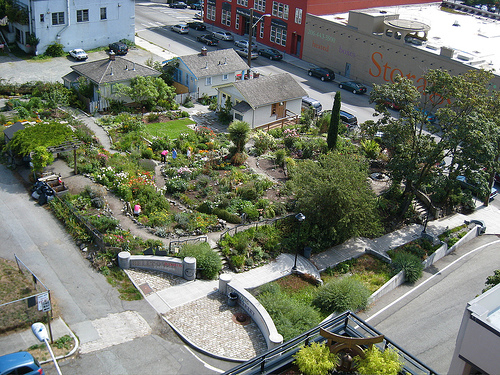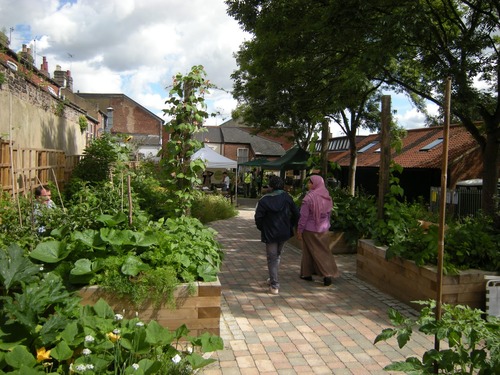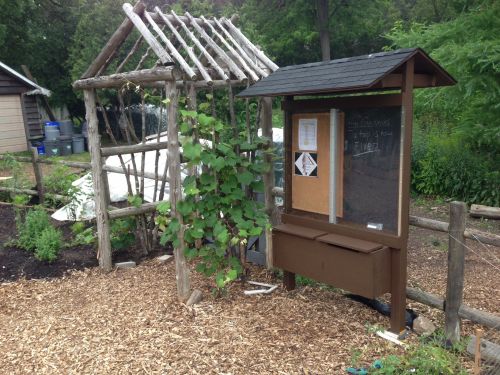Farmer D has a lot of experience planning community gardens in the Southeast. Here he’ll share practices to ensure that all members of your community can participate in the garden and enjoy the fruits of their labor:
Community gardens have become the new hangout at parks, schools, places of worship, previously-empty lots, and any other little swath of land that can be transformed into a vibrant garden where both food and community are grown. Many community garden leaders intend their locations to be welcome havens for all, but achieving that in reality can sometimes be challenging. Here are 5 tips to help your community garden succeed:

1. Make sure your location is easily accessible.
Can you see the garden from the street, or is it blocked by weeds and debris? Is there available parking, including a bike rack? Do you have signs letting people know that it is a community garden and all are welcome to visit? If not, these are all easy, inexpensive fixes that might just mean clearing out and designating a little extra space to make your members and visitors feel more welcome.

2. Accommodate those with disabilities.
If you haven’t thought about accessibility for people with disabilities, you’ll probably think of it pretty quickly the first time someone with a cane, walker, or wheelchair can’t get up your wood-chipped path. This is where a paved path, at least partially, and an extra-high raised bed that a wheelchair can slide under or beside come in handy. many community gardens are incorporating these elements right from the get-go. Other amenities that take into consideration a wide range of abilities include shade areas, benches, convenient restrooms, and sensory integration elements such as herb gardens, wind chimes, art elements, water elements, food sampling areas, and other features where the five senses are awakened.

3. Maintain an open door (gate) policy.
There comes a time, usually around the first tomato-snatching, when community garden leaders decide to lock their gardens to reduce the chances of theft. Best practices nationwide show proven strategies to achieve this goal without locking out the public. These include encouraging members to personalize their beds and harvest frequently to show that the food grown is valued, dedicating excess produce to a local food pantry to show commitment to those in need in the area, and offering a “thieves’ bed” where anyone can pick whatever’s ready to be harvested. Also, keep finding ways to involve more parts of the community in the garden, and you will increase the number of people who feel ownership and pride in it, and will thereby help protect it. Buddying up with your local police department is always a good idea. You could even offer a neighborhood precinct a few free plots in exchange for their support.

4. Provide a welcoming atmosphere.
Community garden leaders can set a good example for their members by always greeting visitors to the garden, engaging them in conversation, and inviting them to help or browse. People who linger, laugh, and learn together create a positive environment that is attractive to others. Some ways to know if you’re a quart low on this attribute are: (a) if your garden members are simply running in, watering, and leaving, (b) if your garden members don’t know each other’s names, © if you don’t have a steady stream of non-members coming by to check out the garden, and, of course, (d) if going to the garden is simply not fun.

5. If you want to grow food for sale, check the rules.
You now need to determine whether or not commercial activity is allowed, plus how you can accommodate larger equipment, food storage, accessory structures, and a larger compost operation than a community garden or home garden might require. Contact your city hall for exact details about local ordinances that affect growing food where you live. And be ready to dig in when it’s time for spring planting.
Pick up a copy of Farmer D’s book Citizen Farmers for more tips, stories and inspiration to get gardening!
0 COMMENTS